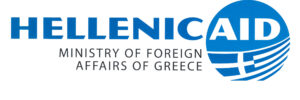This paper (2018 edition) suggests a framework that governments and stakeholders can use in their countries to take action to leave no one behind in a way that enables and accelerates national progress to achieve the Sustainable Development Goals (SDGs).
People get left behind when they lack the choices and opportunities to participate in and benefit from development progress. This paper asserts that to understand who is being left behind and why, and to shape effective responses, five key factors should be assessed:
(i) Discrimination: People are left behind when they experience exclusion, bias or mistreatment in laws, policies, access to public services and social practices due to their identity (primarily relating to their gender, but also age, income, ethnicity, caste, religion, disability, sexual orientation, nationality as well as indigenous, refugee, displaced or migratory status).
(ii) Geography: People are left behind and left open to vulnerability and inequity when denied social and economic opportunities, human security and/or quality public services based on their place of residence. People in rural areas across low- and middle-income countries are far more likely to be multidimensionally poor than people in urban areas.
(iii) Governance: People set back by global, national and/or sub-national institutions that are ineffective, unjust, exclusive, corrupt, unaccountable and/or unresponsive; and/or by laws, policies and budgets that are inequitable, discriminatory or regressive. With limited capacities and leverage to engage and influence global decision-making, poor countries and populations are less able to anticipate and benefit from global trends in technologies, trade and markets.
(iv) Socio-economic status: People get left behind when they lack the opportunities and capabilities to earn an adequate income, accumulate wealth or otherwise fully and equitably participate in their economy and society. Those living in least developed countries face particularly steep capacity, capital and human resource barriers that often effectively lock them out of global markets and trade and investment opportunities, as well as prevent innovation and the diffusion of new technologies.
(v) Shocks and fragility: People get left behind when they are vulnerable to risks related to violence, conflict, displacement, large movements of migrants, environmental degradation, natural hazard induced disasters and other types of climate events, or health shocks, such as epidemic outbreaks. Among the world’s 244 million migrants, 41 million are internally displaced, more than 21 million are refugees and 3 million are asylum seekers. Extreme poverty is increasingly concentrated among vulnerable groups displaced by violent conflict and within countries and regions affected by conflict.
The 2030 target date, means action is now urgent, particularly to understand who and why people are left behind within their own particular national and local contexts. The five factors constitute a framework that can be applied to this end. To leave no one behind, however, work cannot stop there. Early efforts to implement the pledge suggest three mutually reinforcing “levers” are required:
(i) Examine: Understanding who is being left behind and why. The totality of disaggregated evidence and information will need to be considered together across the five factors to identify the intersecting disadvantages and deprivations that leave people behind; to recognize patterns; and to fill essential gaps in data, financing and capacities.
(ii) Empower: Enabling voice and meaningful participation. Governments will need to facilitate learning, community engagement and trust-building by establishing inclusive and safe spaces and mechanisms to secure and respond to feedback from marginalized communities and groups, as well as to ensure their interventions are informed by the rights, voices and perspectives of the furthest behind.
(iii) Enact: Inclusive, catalytic and accountable strategies, policies and financing. Identifying and tasking those responsible to take action on the pledge to leave no one behind is a critical first step to enable effective and inclusive SDG implementation. Capacity support is necessary to respond effectively to left behind communities, anticipate risks, plan and deliver SDG strategies that improve public services and policies.
More information: https://www.undp.org/content/undp/en/home/librarypage/poverty-reduction/what-does-it-mean-to-leave-no-one-behind-.html
